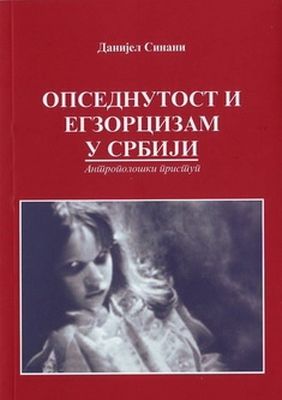
We kindly inform you that, as long as the subject affiliation of our 300.000+ articles is in progress, you might get unsufficient or no results on your third level or second level search. In this case, please broaden your search criteria.

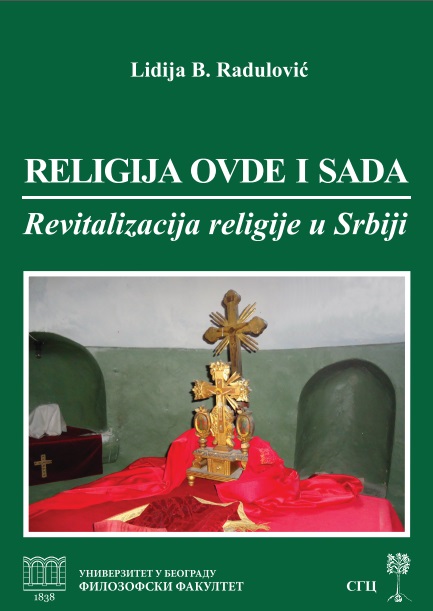
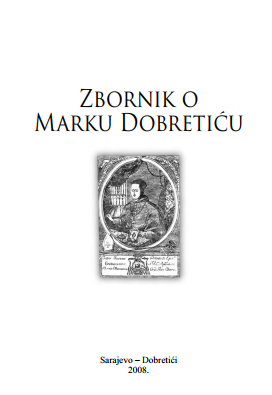
Rijetko koji velikani nastavljaju tako intenzivnu povijest poslije smrti kao sveci. Duboko urezani u religiozno i povijesno pamćenje oni prelaze prostorne i duhovne okvire svog zemaljskog života. To se svakako može kazati za svete Iliju i Juraja koji su putem hagiografskog predstavljanja i liturgijskog štovanja bili živo prisutni u općoj Crkvi kršćanskog Istoka i Zapada. Franjevačka propovjednička literatura i pjesništvo 18. stoljeća u njihovu predstavljanju kao da ima obvezu snažno naglasiti da su oni zaštitnici Bosne još od davnih vremena.
More...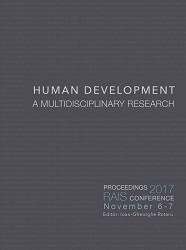
Gender equality or non-discrimination has been recognized in a wide range of binding and none binding international human rights instruments, including declarations and other standards e.g. Convention on the Elimination of all Forms of Discrimination against Women adopted in 1979 and came into force 3Sept. 1981, Convention on the Elimination of All Forms of Racial Discrimination of1965, International Covenant on Civil and Political Rights, International Covenant on Economic, Social and Cultural Rights etc. International and national law chiefly regulated discrimination as it relates to gender equality when addressing cases of human rights. Equal treatment of men and women in the workplace around the globe including Nigeria is faced with several challenges. In recent time, women have made progress in the educational sector and despite their educational attainments; they are faced with discrimination at the workplace. The discrimination witnessed by women on a daily basis is not distant from the level of education or access to education as well as culture and religion, which equally regulate rights and duties of women in various backgrounds. This paper addresses human rights as it relates to gender and discrimination by appraising gender impacts on culture and religion, education, and workplace under Nigerian perspective. State party’s obligation under international and or national law in human rights protection under civil and political rights as well as economic social and cultural rights will also be addressed.In conclusion, possible reforms are suggested, which includes adopting national human rights legislation dealing specifically on discrimination in the workplace
More...
After highlighting the major psycho-physical constituents of human personality a la Vedānta, the paper has focused on (i) the role of mind/brain, individual soul/Universal Soul and individual Self/Cosmic Self on its sustained development & also on (ii) the distinguishing features of the Vedāntic views from those of the Western views.
More...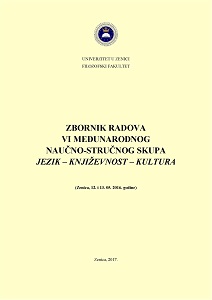
It was a challenge to conduct research in this field after many years of residence and direct contact with Bosniak communities in rural areas in the Republic of Turkey. During research we came across people and customs, language, culture, religion and tradition in the communities miles away which share the cultural pattern, personality and charismatic moral code with people from the same cultural historic circle.
More...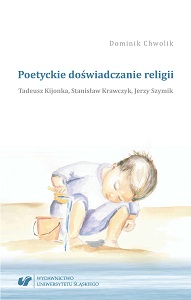
In his work, the author discusses the issues of the religious sphere associated with every human being and their everyday existence, regardless of the different doctrines or points of view. Furthermore, these issues find their way into literature which aims at reflecting human life. Such poetic experience of religion can be seen in the works of Tadeusz Kijonka, Stanisław Krawczyk and pr. Jerzy Szymik on which the author based his research.The author reviews the classic religious study works, such as the theories of Rudolf Otto, William James or Mircea Eliade who view the contact with the sacrum through the prism of the feelings associated with it. Given, however, the distant time of the theories’ development, the author does not abstain from mentioning other deliberations resulting from the poets’ inveteracy in the Catholic thought circles. The poems by Kijonka contain references to JohnPaul II, whereas the theology of Benedict XVI is significant when attempting to interpret the works of Szymik.The three aforementioned poets, although associated with Silesia (with its’ traces visible in their works) do not represent, in the authors’ view, the ‘Silesian religiousness’ stream. It does,however, serve the purpose of evoking that which is universal or it may become a pretext to reflect upon experiencing the sacrum and profanum.While analyzing the work of Kijonka, the author points out, above all, the contrast between the faith of a trusting child and that of a doubtful adult (which is to be understood as a reflection of the struggle with reality). The poet often returns in his memories to his childhood, irreversibly lost (as the past Christmas) once the border (of the forest or city) is crossed. In his works, an adult is depicted as someone who feels abandoned and looks at the sky expecting a miracle. They yearn to return to the distant past or even to the heavenly state. God, in Kijonkas’ writings, is both close and distant. The author of Time, places and words (org. Czas, miejsca i słowa) deals with the matters of one’s body, sickness (even his own one) and death, as well as with the image of the mother (both earthly and heavenly — Mary).In the chapter devoted to Krawczyk, the author discusses the issue of a man standing in the centre of a world undergoing destruction, where the surface resembles a volcanic landscapeand the protagonist wanders in search of faith. In his poems, the poet dwells upon the matters of the mystery of the interrelation of both man and God (the incarnation of Christ, co‑experience of suffering), the human fate and ‑ what is significant ‑ the mysteryof his own (the creators’) ‘self’. He performs a self‑evaluation.In Vowels and colours (org. Samogłoski i kolory), Krawczyk focuses also on the intriguing, incorporated in the religious codes of his poetry, thread of the woman (through the comparison of his wife and Eve from the paradise).The last section of this thesis is associated with the wor of Jerzy Szymik. The author especially focuses on the prospect of the man continuously getting nearer to God through everyday life, as portrayed by the priest‑poet.Included in the work of Szymik are the categories of suffering (Incarnation and its mystery, similar to Krawczyk), sickness (similar to Kijonka — his own state), death, but also priesthood, the Resurrection and even common, everyday events. The description of the image of Mary or the references to journeys, both local ones to Pszów or Lublin and more distant ones to Italy or the United States, are not different. The author of Gods’patience (org. Cierpliwość Boga) notes a remarkable relation between the sacrum and profanum (the example of the temple and the city).When it comes to the Creator himself, Szymik refers to him as Love, after Ratzinger.Religious experiences, in the view of the author of the thesis, permeate the poetry of Tadeusz Kijonka, Stanisław Krawczyk and Jerzy Szymik regardless of their own beliefs or the similarities and differences one can find between them. This is due to the fact thatthey are associated with something greater ‑ the personal struggle undertook by the poets which we can find reflected in their works.The doctoral thesis was created under the supervision of Professor Marian Kisiel.
More...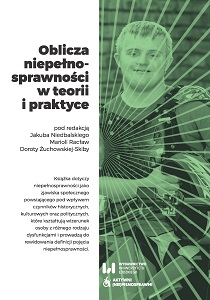
The expansion of reflection on the position of people with disabilities outside of Western culture is of particular importance today. As a result of processes taking place in today’s world, our society is changing ethnically and begins to diversify in terms of culture and religion (migration processes, refugees, etc.). In this sense, it is important to recreate ways of defining disabilities shaped under separate civilizational and cultural conditions so that people with disabilities can receive effective help. The main purpose of this chapter will be to show the perception of disability shaped under the influence of the Muslim religion. Islam regulates all spheres of life of its followers, thus reconstructing the ways of perceiving disability in the Koran and sunnah will allow to show ways in which the followers of this religion define this phenomenon and explain cultural patterns of social reactions to disability.
More...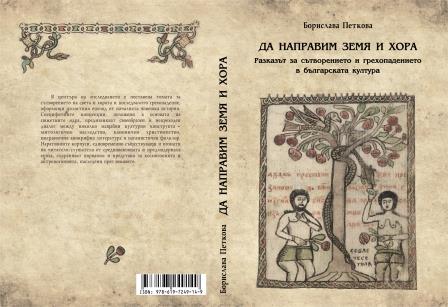
The main subject in the book is the creation of the world and humankind and the following Original sin, shaping the entire episode of the beginnings of human history. The specific concepts laid out on the basis of the core elements of the subject, evoke a peculiar and endless dialogue between broad cultural constructs – the mythological heritage, canonical Christianity, adjoining apocryphal literature and pagan folklore. The narrative corpora, which were simultaneously existing and known to the medieval and pre-modern reader or listener, preserve the ideas and beliefs about comogony and anthropogony inherited through the ages.
More...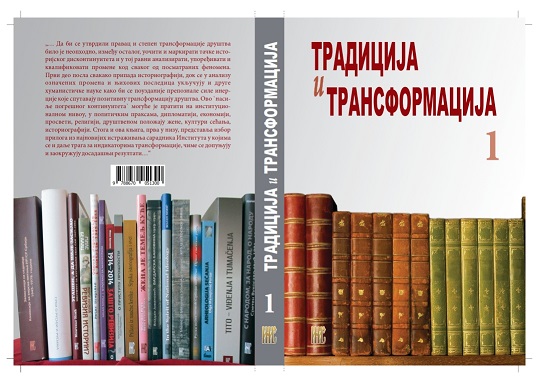
Serbian and Bulgarian Orthodox Church entered into a process of gradual rapprochement during the interwar period. The process was aiming to overcome feelings of mutual distrust and bitterness caused by the ongoing implications of the ‘Macedonian Question’ and maltreatment of the Serbian priesthood under the Bulgarian occupation of Serbia during World War I. An important role of intermediary in this process of reconciliation was played by organization ‘The World Alliance for International Friendship through the Churches’. After the church delegates faced many difficulties; a final breakthrough in negotiations took place on the meetings held in the monastery of Rila in Bulgaria in 1933 and the monastery of St. Naum in Ohrid in 1936. Since then, the relations between the two churches became more or less sett led until the April War in Yugoslavia in 1941. Namely, as a consequence of the partition of the Yugoslav territory the Bulgarian Orthodox Church had assumed jurisdiction over three Serbian Orthodox Church dioceses in Macedonia.
More...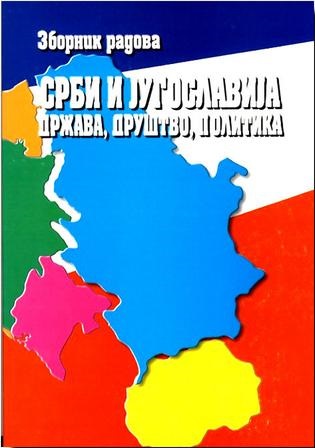
The demands for reforms in many matters occurred in the Orthodox Churches after the First World War. One of the most important of them was the matter of the calendar. Representatives of the Ecumenical Patriarchy were leading proponents of the reformist tendencies within Orthodoxy. This was a direct consequence of the political changes in Turkey in 1920s. They convened an all-Orthodox congress in Constantinople in 1923, which was attended also by the representatives of the Serbian Orthodox Church. Neither all Orthodox Churches nor the majority of their representatives were represented at the congress, so its legitimacy soon became disputed. The decisions which were reached were not put to practice by most Orthodox Churches, and even where they were, it was not done in the same way, which led to serious splits within the Orthodox world. Although it had its representatives at the congress, the Serbian Orthodox Church did not apply its decisions (the calendar, the second marriage of priests etc.). Diverging opinions about the congress’s decisions caused serious polemics among theologians and priests in the Kingdom of the Serbs, Croats and Slovenes. Attempts at solving the questions which divided the orthodox world at the ecumenical congress yielded no results until the Second World War, and they remained open even later.
More...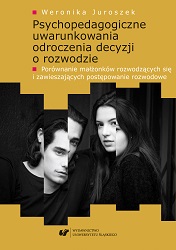
The issues of the research carried out fall within the scope of the determinants of divorce conflict and coping with it. The subject of the research are factors that condition the postponing of divorce decision (manifesting itself in the form of the suspension of divorce proceedings). It has been assumed that the durability of marriage is a value which needs to be protected, hence the importance of such actions of the spouses which aim at reconstructing the bonds of marriage. These actions include the suspension of divorce proceedings. The factors that determine the decision concerning the suspension have been analysed. In order to do so, the spouses who decide on the suspension of divorce proceedings and those who take the final decision to get divorced have been compared. In the research carried out, it has been assumed that there are specific conditions for the suspension of divorce proceedings. They are as follows: maturity for marriage, conjugal family of origin, marriage duration, income, duration of mediation sessions, engagement of an attorney in the proceedings, participation in a therapy. In view of the above, the following hypotheses have been drawn: spouses who suspend divorce proceedings, compared to those getting divorced, are characterized by greater maturity (manifested by empathy, caring for the well-being of the children, caring for financial security of the family, fidelity, the will to forgive, help in difficult situations and responsibility), more frequently come from conjugal families, more seldom declare premarital pregnancy, are characterized by a longer duration of marriage, have higher incomes, spend less time at mediation sessions, more often decide to participate in a therapy. A research question regarding the reasons for the deterioration of marital relations has also been posed. The aforementioned hypotheses have made it possible to determine research variables – dependent and independent. The dependent variable is the type of a settlement reached, i.e. a written contract between the disputing parties, the aim of which is to reach an agreement. The settlement takes one of the two forms: a suspension of divorce proceedings (spouses decide to postpone the divorce decision) or a divorce (spouses sign a divorce agreement, in which they state that economic, physical, psychical and spiritual bonds between them have extinguished). Independent variables, in turn, refer to other conditions for postponing the divorce decision, which have been listed earlier. The data for the research have been gathered from interviews. Two interviews have been made with spouses who have filled divorce petitions and agreed to be interviewed and for the data obtained from these interviews to be used anonymously. The data gathered from interview 1 contained the following information regarding the characteristics of the group studied: the age of the spouse, the age of entering into marriage, the level of education, living together or apart, the plaintiff’s sex, the number of children, the number of siblings, the type of marriage entered into, the marital status at the moment of entering into marriage. The interviews have also made it possible to gather data concerning the family of origin (conjugal/broken), premarital pregnancy, the duration of marriage, spouses’ income, the duration of mediation sessions, hiring an attorney, the declaration to take part in a therapy. During interview no. 1 the researcher also posed a question regarding the reasons for the deterioration of marital relations: ‘What caused the deterioration of marital relations?’ The researcher noted down literal responses of the persons being questioned. Interview 2 was constructed on the basis of pilot studies and subject literature. It concerned spouse perception of their maturity for marriage (app. 2). The interview was of a structured character. It consisted of 10 closed questions to which the persons responded ‘yes’ or ‘no’. The questions concerned the following aspects of maturity: caring for children’s well-being, caring for financial security of the family, help in difficult situations, the willingness to forgive, empathy, fidelity and responsibility (accepting the consequences of one’s own actions, keeping commitments, the feeling of guilt in the case of hurting family members, striving toward redressing the wrong). It must be emphasised that (app. 1) all married couples (i.e. 333), including 46 couples suspending divorce proceedings and 287 couples getting divorced participated in the first interview (nevertheless, full data were not gathered from all spouses, hence different number of persons questioned are presented in particular tables). In the second interview concerning maturity (app. 2), 82 married couples participated, including 46 couples getting divorced, selected in such a way that both groups (spouses getting divorced and those suspending the divorce proceedings) were as similar to each other as possible in terms of age, duration of marriage, the number of children, the level of education, age when entering into marriage, marital status at the moment of entering into marriage. Quantity strategy has been used in the research paper. Regularities achieved by means of the statistic analysis method have provided a general picture of the situation of spouses getting divorced and facilitated a confrontation of the results with statistic model assumptions. These regularities have been completed with spouses’ statements, which have given a new significance to the results obtained within the statistic analysis and have provided interesting possibilities to interpret them. Additionally, the aforementioned statements have enriched the contents of this thesis, as individual’s opinions often appeal more to the reader than „dry” statistical data. The thesis consists of three parts: theoretical, methodological and empirical. In the theoretical part (consisting of three chapters) the following issues have been analysed: spouses’ psychological maturity, values and their significance in spouses’ lives (with specific consideration given to the values of education), divorce as a social problem (statistical data illustrating the situation of divorces in Poland), the reasons for a divorce conflict, the state of research regarding psychosocial consequences of divorce for parents and children. Taking into consideration the fact that the research describes married couples participating in mediation, the theoretical part includes basic information about it and the procedure of suspending divorce proceedings. The methodological part includes research questions and hypotheses, the method of gathering data, variables and research procedure. The research group has been described, taking into account its characteristic features, such as the age of spouses, the age at the moment of getting married, level of education, type of living (together/apart), the number of children, the number of siblings, the marital status of the spouses at the moment of getting married. The next five chapters – empirical – refer directly to the hypotheses tested and to the responses to research questions concerning the causes of the deterioration of marriage relations. It has been assumed in this thesis that marriage is a value, hence factors considered to be especially important are those underlying the decision to suspend the divorce proceedings for some time in order to fix the damaged relations. The results of the research carried out have confirmed all the verified hypotheses, so it turned out that both spouses’ maturity (including responsibility), conjugal family of origin, longer duration of marriage, higher income, shorter mediation sessions as well as declaration to participate in a therapy favour the suspension of divorce proceedings. In turn, the decision to get divorced coexists with declaring premarital pregnancy and hiring an attorney in mediation. In response to the research questions posed, such causes have also been named which in the opinion of the spouses researched have had a decisive influence on the deterioration of marital relations, and as such favoured divorce and not the suspension of divorce proceedings. They are as follows (listed from the most frequently to the most infrequently declared): adultery, mother-in-law’s interference, addiction, problems with work, child’s birth, a child from previous relationship, illness and disability in the family, father-in-law’s interference, miscarriage, departure abroad, others. The results of statistical analysis have shown the following reasons for the deterioration of marital relations, which significantly differentiate the group getting divorced from the one suspending divorce proceedings: adultery, addiction, problems with work, child’s birth. It must be emphasised that while both verifying the hypotheses tested and discussing the reasons for the deterioration of marital relations, statements regarding maturity with special concern given to the value of responsibility have been searched for in the spouses’ statements. It has been assumed that maturity and pursuing values in life have key significance for postponing the decision about divorce. Numerous detailed issues experienced by spouses in the divorce crisis have been listed in the thesis. Knowing these problems and the attempts to solve them may be used during various meetings and workshops, which aim at shaping correct attitudes towards marriage and family. Using some problem illustrations in writing educational programs for schools, preparing young people for married life is also worth considering.
More...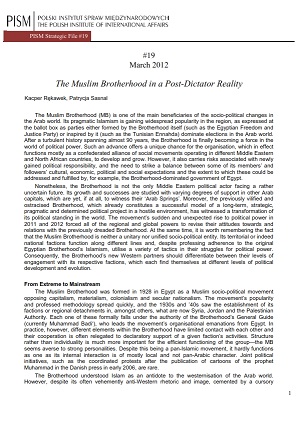
The Muslim Brotherhood (MB) is one of the main beneficiaries of the socio-political changes in the Arab world. Its pragmatic Islamism is gaining widespread popularity in the region, as expressed at the ballot box as parties either formed by the Brotherhood itself (such as the Egyptian Freedom and Justice Party) or inspired by it (such as the Tunisian Ennahda) dominate elections in the Arab world. After a turbulent history spanning almost 90 years, the Brotherhood is finally becoming a force in the world of political power. Such an advance offers a unique chance for the organisation, which in effect functions mostly as a confederated alliance of social movements operating in different Middle Eastern and North African countries, to develop and grow. However, it also carries risks associated with newly gained political responsibility, and the need to strike a balance between some of its members’ and followers’ cultural, economic, political and social expectations and the extent to which these could be addressed and fulfilled by, for example, the Brotherhood-dominated government of Egypt.
More...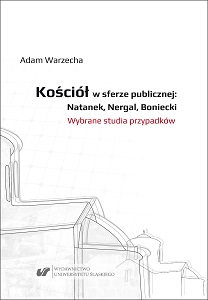
Relations between the Roman Catholic Church and the public sphere in Poland have played an important role in socio-political life since the dawn of our statehood. Recently, however, the Church’s situation has become more complex. Its social position, until recently almost unchallenged, gradually decreases. The book is an attempt to answer questions about the causes of this situation. Readers can learn from it about the Church’s functioning in the Polish public sphere, especially in terms of communications (how is the public relations’ social practice recontextualized in it) and discursive strategies utilized. The study employs Critical Public Relations (CPR), the original and interdisciplinary research method presented here for the first time, combining conceptual devices of Public Relations (PR) and Critical Discourse Analysis (CDA). It is used to analyze manifestations of communication semiosis of the PR-type established in the Roman Catholic Church in Poland. Through the said analysis, the answer is given to the question of how this semiosis materialized in the multiple “hard” Church social structures (institutions, posts, functions, strategies, procedures, etc.) and how it is operationalized in “soft”, impermanent, though specific and dynamic, communication events in which the Church took part. To this purpose, case studies of Rev. Piotr Natanek, Adam “Nergal” Darski and Rev. Adam Boniecki are carried out. They are considered representative due to the nature of the public debate accompanying them, as well as the quantity of available research material. The events in question are reenacted based on the corpus of texts and audiovisual records from 2007–2017, thoroughly analyzed using a process-oriented case-study method. Interdiscursive analysis facilitated precise identification of various discursive strategies (including semantic shifts, vague relationships, exclusion from discourse, scandal and viral communication), and above all, the struggle of these strategies for hegemony within and outside the Church organization. This indicates the applicability of the proposed analytical approach to future studies of various border areas in the humanities, especially when such interdisciplinarity poses a number of methodological concerns.
More...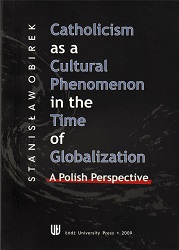
„On the densely and richly populated Polish intellectual scene, Stanisław Obirek is one of the most prominent and significant, indeed out-standing actors. He stands out from the rest of actors for the role he designed and scripted for himself and has been consistently, over many years, performing; (…) a role that follows no ready-made scripts and lines, a role that Obirek originated and developed (…) and which it have succeeded by now to make an indispensable part of the Polish intellectual life.One should be grateful to the publishers for collecting, (…) the manifold Obirek’s writings on the subjects ranging from the general condition of religion in contemporary world, through the problems related to the Church’s place and role in society (…). and up to the convoluted, intricate and puzzling case of the Polish-Jewish relation, which Stanisław Obirek is not the first Catholic tackling, but perhaps the first scholar attempting to approach it as a Catholic. One should be graleful to the publishers, as what they offer the readers is a genuine treasure-trove of fascinating findings, convincing interpretations and inspiring visions, which will most certainly earn a distinguished and durable place in the ongoing debates in Poland, but also all around our disunited yet struggling to unite planet.” Zygmunt Bauman
More...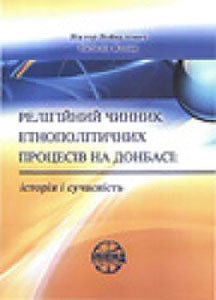
The book gives a historical approach to religion in the Donbas region from its early times to the present. It suggests thorough analysis of how religion interacted with politic on the one side and ethnic identifications of its inhabitants on the other in different periods of the history of Donbas. Historical background of regional specificity helps to better understanding the system of values and senses in contemporary Donbas – economically and socially the most depressive region in Ukraine – with the lowest level of religious self-identifications and irrelevant attitude to ethnic markers of the local population, instrumental use of religion by regional political class and oligarchs, and the highest rate in the country of new (quasi-) religious organisations and movements.
More...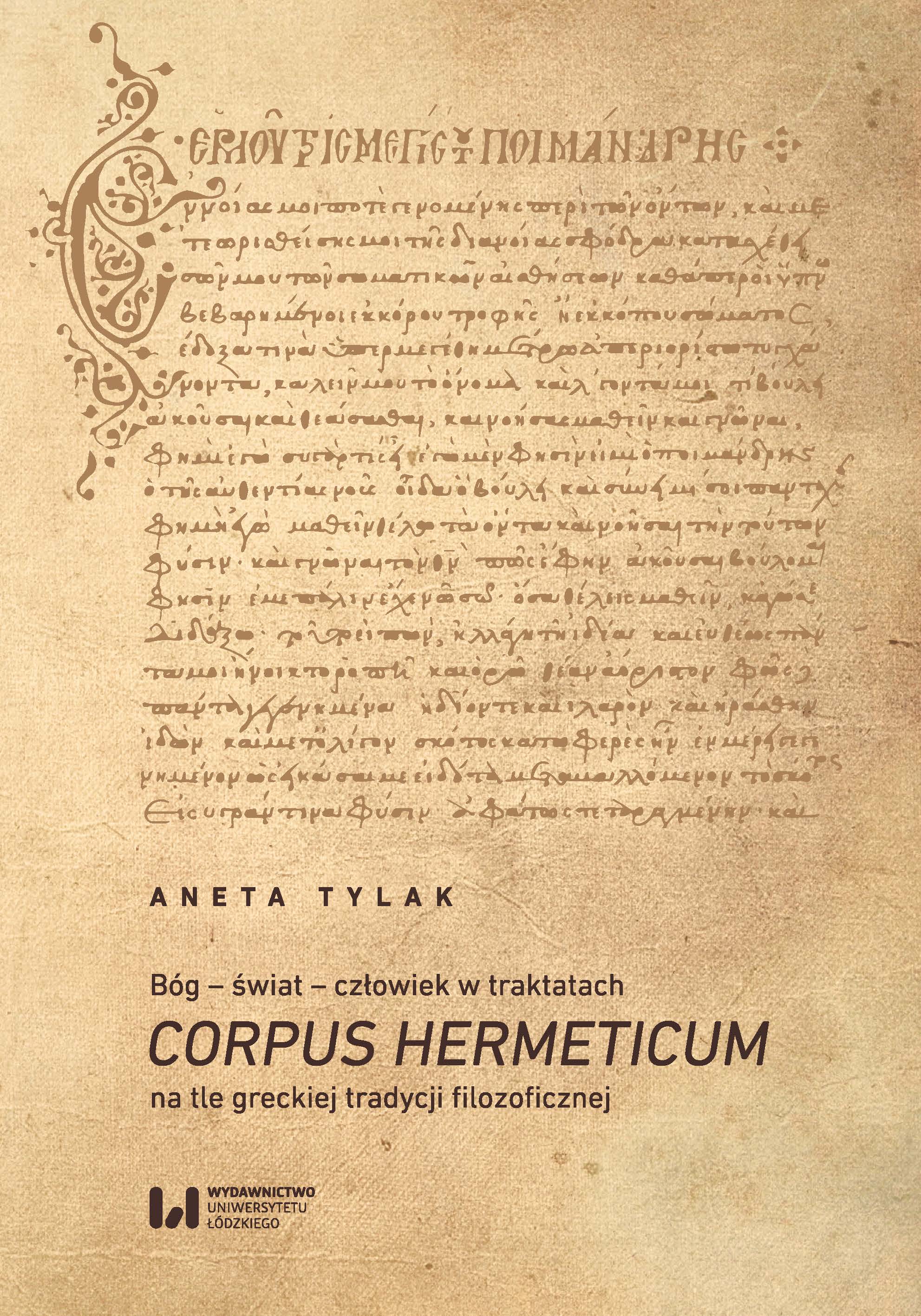
This study fits into the field of modern research on the issue of ancient hermetism. Its subject is the analysis, on the background of earlier philosophical tradition, of the way of depiction of three terms, viz. god, world, and human, in the seventeen Greek treatises belonging to the collection Corpus Hermeticum. The main part of this book consists of three chapters devoted to presentation and a thorough cross-sectional analysis, of three subsequent terms the “hermetic triad” consists of. Conclusions drawn from the analysis of the treaties included in the Corpus Hermeticum allow the examined collection to be classified as syncretic writings, which frequently do not show cohesion and consistency. Although it is hard to talk about a hermetic theology, cosmology, or anthropology sensu stricto, upon reading the said treaties, quite firm bases of these concepts can be established - namely ideas which recur throughout all, (or almost all) treaties, despite the fact that they unfold differently or do not unfold at all. Corpus Hermeticum is a collection of treaties in which a syncretic philosophical thought prevails, and in which the beliefs held by Plato, Aristotle and the stoics come into the forefront. The second part of this book comprises original Greek texts of Corpus Hermeticum with the first complete Polish translation.
More...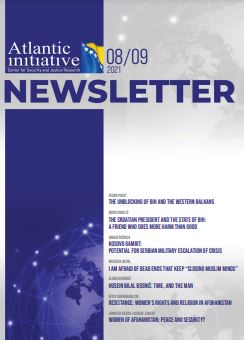
In this issue of the Atlantic Initiative Newsletter, we present a series of current analyses and opinions on the political situation in the Western Balkans, with a special focus on the recent crisis in Bosnia and Herzegovina caused by the systemic blockade of its state institutions. Instead of an editorial, we publish a text by Vesna Pusić, who writes about contemporary obstacles to the European transformation of Bosnia and Herzegovina and other Western Balkan countries. Pusić focusses on unblocking the progression of Euro-Atlantic processes, and how the EU must find a new modus vivendi with Russia in order to expedite change. Also, in the context of recent crises, Croatian journalist Boris Pavelić writes about relations between Sarajevo and Zagreb. Pavelić pays special attention to the friction between the recent policies of the President of Croatia, Zoran Milanović, and the President of Serbia, Aleksandar Vučić, and how their opposing political rhetorics serve to strengthen destructive nationalisms in Bosnia and Herzegovina. The latest tensions in the Western Balkans are analyzed by culturologist and publicist Srđan Šušnica, an expert on Russian politics and its malignant influence in the region, especially in Serbia. Šušnica argues that stability and peace in the Balkans region depend on the determination of the European Union and the United States to prevent disruptive policies in Serbia and the BiH entity of RS (as well as Montenegro and northern Kosovo), through military, economic and political sanctions. For this issue of the Newsletter, the Atlantic Initiative interviewed the eminent Turkish writer and journalist Mustafa Akyol, who addresses religion and politics in the Muslim world. Amila Buturović spoke with Akyol about his book The Reopening of Muslim Minds, which will soon be published in a Bosnian edition. His book has aroused global attention and great interest, especially because of its call for reform and enlightenment within Islam as a way to solve problems within Muslim societies. Vlado Azinović writes about the recent release from prison of Husein Bilal Bosnić, who was sentenced by the Court of Bosnia and Herzegovina to seven years in prison for recruiting for and inciting terrorist activities, and organizing terrorist groups. As an expert witness in the Prosecutor's Office of BiH in the trial, Azinović looks back at the trial itself and the accusations for which Bosnić was convicted, and also provides an analysis of his ideology and possible future activities. In this issue, we also feature two timely texts on the new situation in Afghanistan after the return to power of the Taliban. Afiya Shehrbano Zia writes about the resistance and struggle of Afghan women against oppression in the context of global feminist debates and criticism of Western interventions in Afghanistan, while also looking at how non-Western feminists have engaged with the situation. Jenifer Heath and Ashraf Zahedi contribute a joint article on the prospects for women in Afghanistan - around education, rights, work and daily life - as Taliban rule recommences after 20 years of US occupation and the recent withdrawals.
More...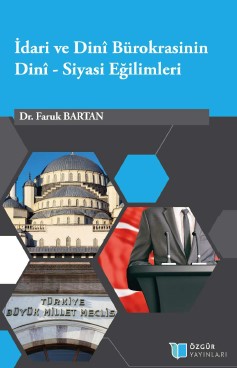
In societies that ensure social integration, it is observed that the institutions of religion and politics do not exhibit a confrontational character. In these societies, the "social distance" between social structure and cultural structure is gradually decreasing. In Turkey, the relationship between "religion and politics" has always been a problem, especially from the republican period to the present day. As a result, the social distance between social institutions in Turkey is gradually increasing. In the solution of this problem, it is important to know the attitudes/mindsets of the individuals/officials (those who are educated in theology and politics) who will be the official representatives of these institutions. The sample group was evaluated according to many parameters. As an important indicator, when the sample group is evaluated according to the place of accommodation during their education, it shows a great difference. It has been observed that the students studying at the Faculty of Theology stayed in rented houses and religious community dormitories at the highest rate, and only 5% of them preferred KYK dormitories. In particular, it can be said that the houses of the Faculty of Theology students, which they describe as rented houses, are under the control of religious communities. As a matter of fact, in the interviews with the students and in the explanations written by the students in the questionnaire form, it is understood that these houses are the houses of religious communities, they are cheaper, and especially the parents of female students prefer these houses because they find them safer. It can be said that the place of shelter has an important function in socialisation and attitude development. As a result of the research, it has been determined that students who live in houses or dormitories under the control of religious communities that understand Islam differently will be confrontational and political in their understanding of religion. This difference affects other areas of life in the dimension of "contradiction" in Turkey.
More...
In this study, Māturīdī’s interpretation of the parable and his approach to faith-themed parables in particular the parables of ‘Prophet Mūsā and The Pious Servant’, ‘Hārūt and Mārūt’ and ‘Hazrat Maryam’ were examined. In the study, it is aimed to determine how Māturīdī analyzes faith-themed parables. In the introduction part of the study, which consists of an introduction and two main parts, information is given about the subject, importance, purpose, method and sources of the research. In the first part, topics such as the concept of parable, the historical reality of parables, and repetition in parables are discussed in order to reveal Māturīdī’s approach to the parables of the Qur’ān. In the second part, his theological approach to the parables of ‘Prophet Mūsā and Pious Servant’, ‘Hārūt and Mārūt’ and ‘Hazrat Maryam’ is examined in detail. As a result of the study, it has been determined that Māturīdī used parables as a source on matters of faith. In addition, it has been concluded that the theological explanations he made are compatible with the kalām system. In the interpretation of the parable of Prophet Mūsā - Pious Servant, he emphasized the attribute of knowledge of Allāh. While explaining the parable of Hārūt - Mārūt, he discussed the ontological reality of magic. In the parable of Hazrat Maryam, he touched on the subject of karāmāt by emphasizing tawḥīd.
More...